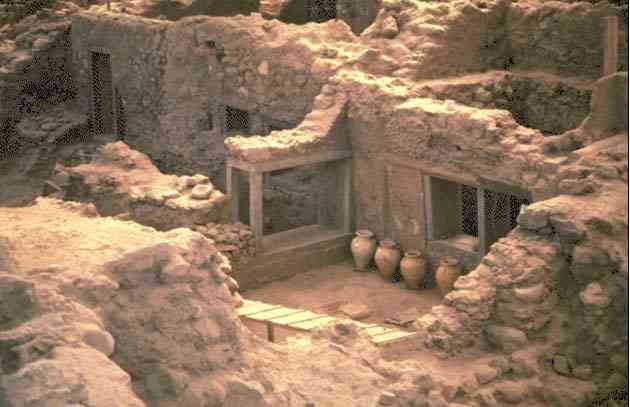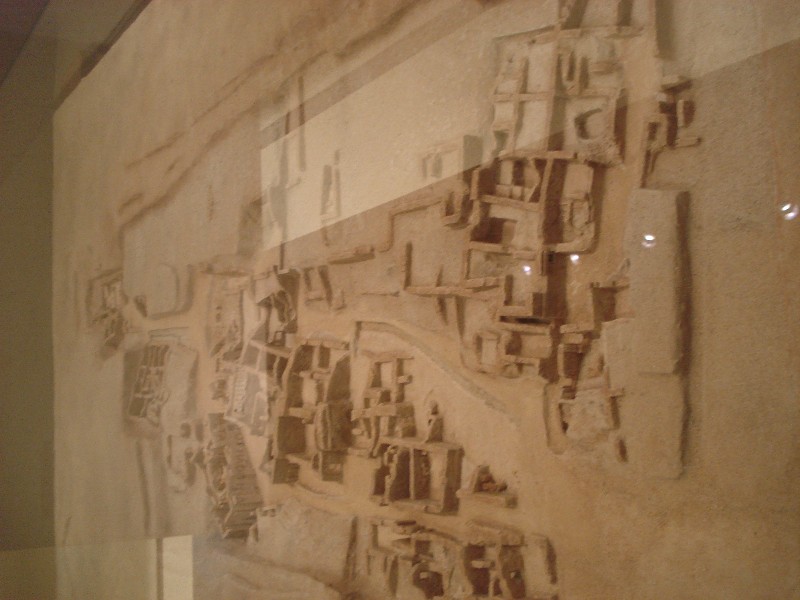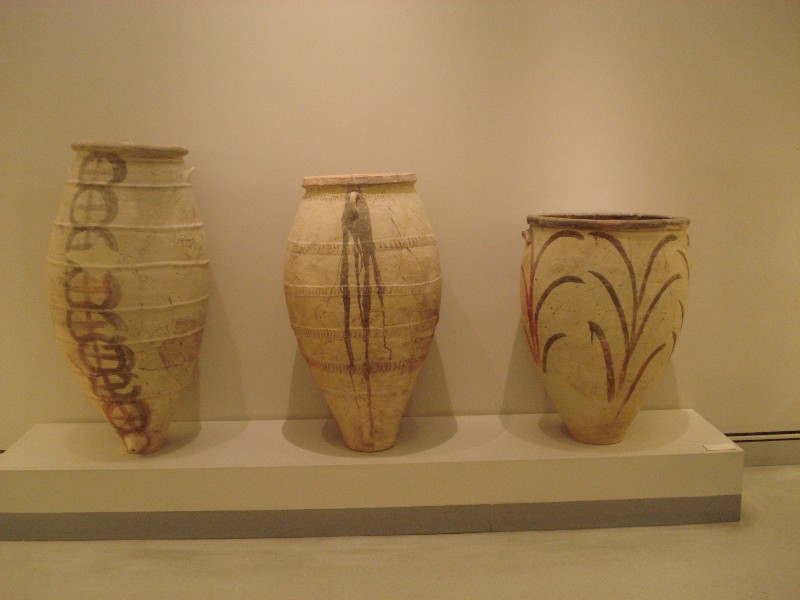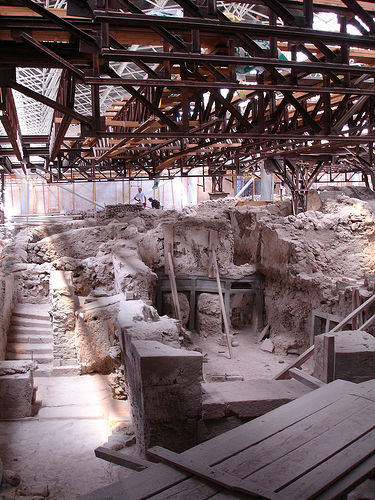Excavations at Akrotiri brought to light amazing findings which witness a wealthy and greatly developed city. A great part of these findings has been preserved in a very good state such as houses consisted of three storeys, vessels and wall paintings as well as tools which prove the progress of the ancient city.

Akrotiri ruins Santorini
Possibly, the first settlement of Akrotiri was established in the fifth millennium BC by fishermen and sailors. Geographically, Akrotiri was at an advantageous position because it was protected against the wind and it was located to Heraklio, Crete. This settlement had grown to a rich coastal city by the third millennium BC and its wealth can be witnessed even by the graves of the cemetery where dead people were buried accompanied by rich funeral items.
Located on the sea route that connected Crete with the rest islands of the Aegean Sea, it got involved to marine and trading activities. Santorini along with all Cycladic islands were located in the centre of the sea routes from where ships that sailed in the Eastern Mediterranean Sea passed. Being on the crossroad that connected north Aegean with the sout as well as east with west, their inhabitants became excellent seafarers and at the same they had the chance to trade and communicate with various people. This gave a boost to their economy and contributed to the creation of a wealthy society.

Map of ancient Akrotiri
The excavations at Akrotiri Santorini, have brought to light a well preserved city where one can make out the main streets that led to the harbor and the smaller alleys which were used for the traffic within the city. The facades of the three-storey houses had been made of local black and red stones and this made them looking as if having been painted in these colors. The city consisted also of buildings for public use and what proves their great organizing and prosperity is the sewerage system that had been constructed in it. So, the public buildings must have been large and usually located in the most central areas of the city.
On the contrary, the houses were smaller in size and they consisted of storing rooms, kitchens and other working rooms on the ground floor while the bedrooms and the living were situated on the upper floors. Large pottery vessels and jars were found in the storing rooms of these houses. They were used for storing cereals, flour, dried fruits etc. These vessels as well as several tools discovered in the houses had been made of exotic material probably brought Akrotiri from another country.

Akrotiri findings at Fira museum
Ostrich eggs and semi-valuable stones that had been used for decorating these vessels witness the range of the trading activities of the locals. Moreover, the art and the working methods of the inhabitants seem to have been impacted by the Cretans given that the two island were in a close and at the same time we should keep in mind that the Minoan civilization had grown in Crete during that period.
The most impressive findings of Akrotiri are the wall paintings which have been preserved in a very good position. The ancient residents of these houses used to paint the walls of their rooms in several ways. The depictions include scenes from daily life with a focus on the marine activities as well as the public feast of the city. One can see some of the most important events of their life such as religious ceremonies or battles depicted on the walls of the houses. Nowadays, some of these paintings are hosted in the National Archaeological Museum of Athens.
The city must have been abandoned by its inhabitants due to the “warning” signs of the Minoan eruption. Given that no human remains or valuable jewllery and weapons have been excavated by now, they must have left the city before the eruption.

Akrotiri Santorini excavations
